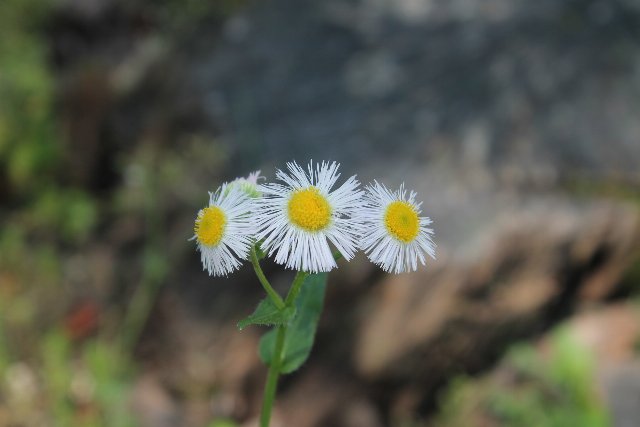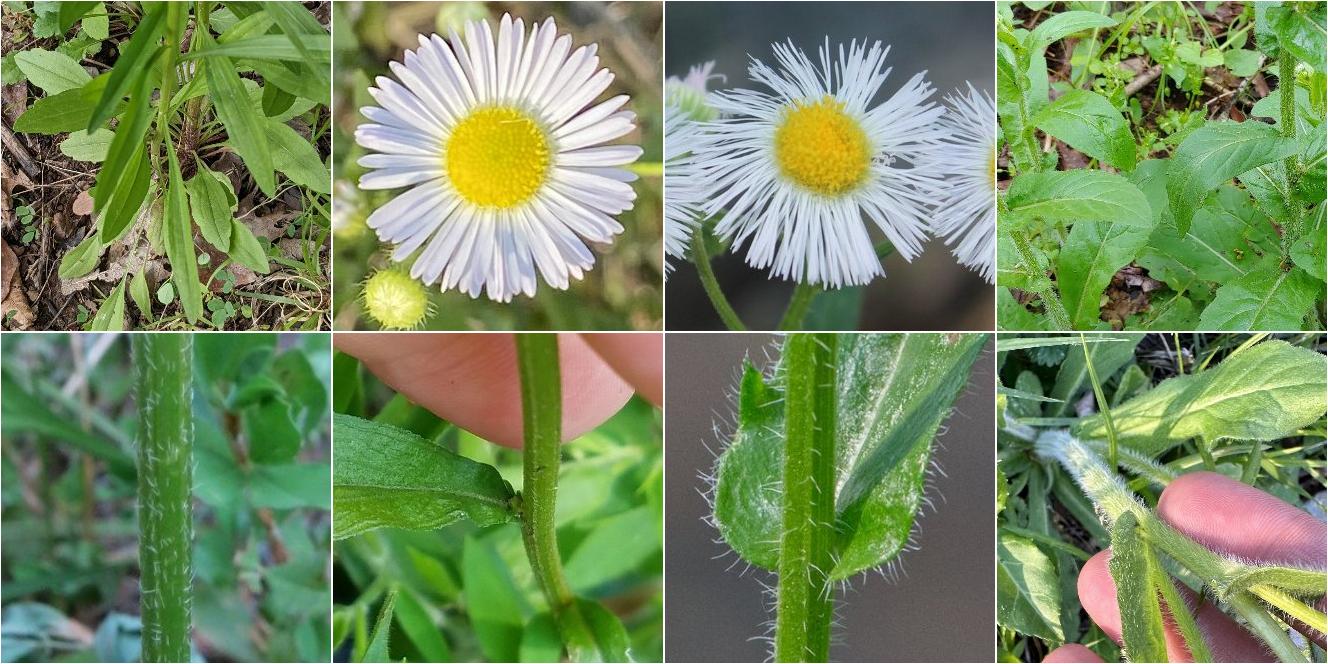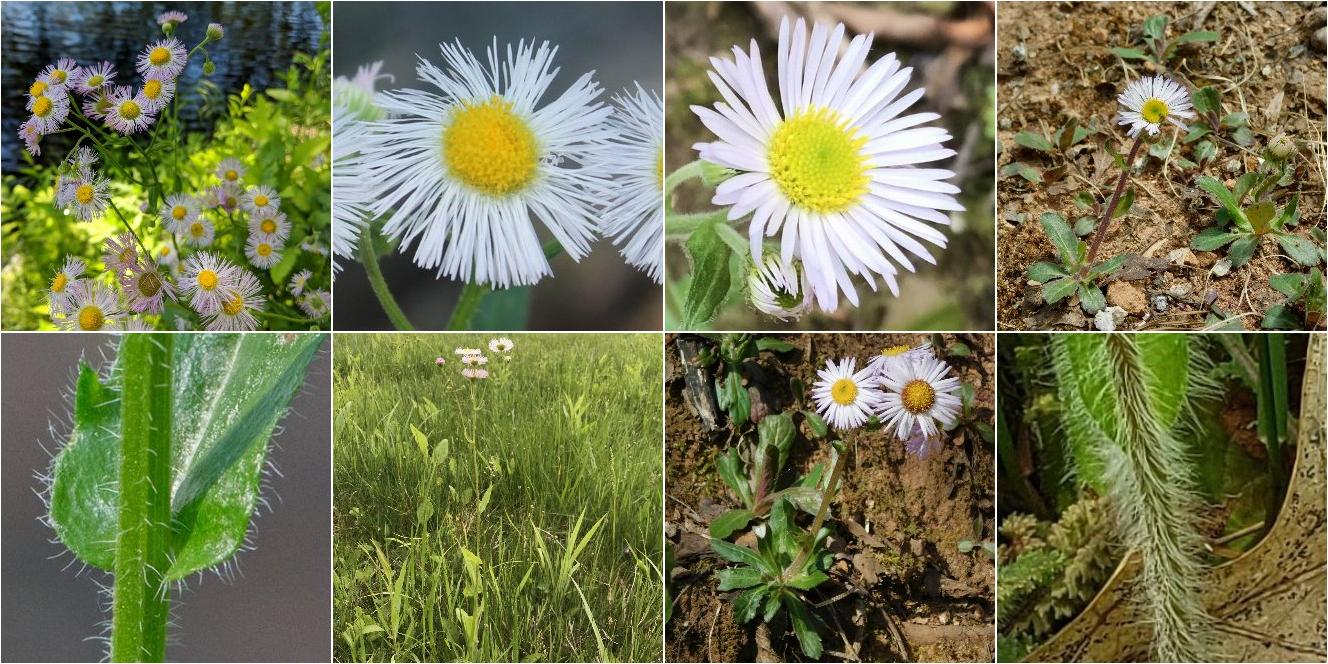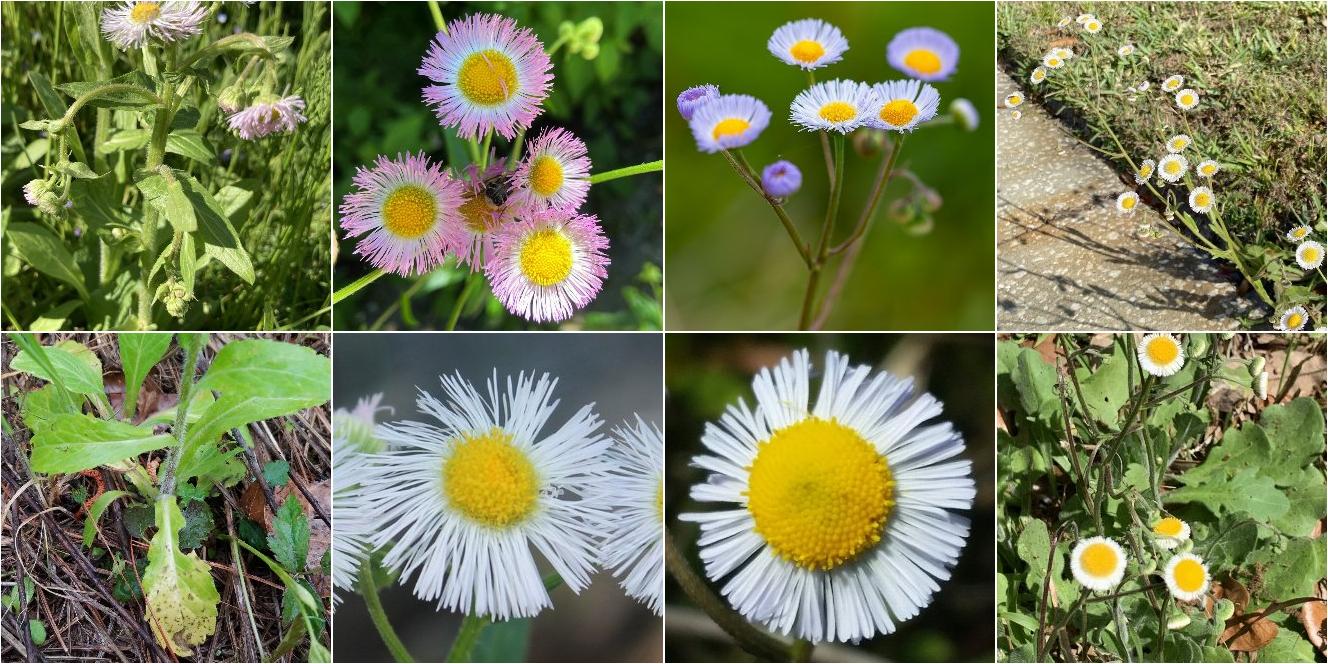Prairie Fleabane (Erigeron strigosus) vs. Philadelphia Fleabane (Erigeron philadelphicus)
Updated May 28th, 2023These two species are usually easy to tell apart whether or not flowers are present, as they have major differences in flower structure as well as leaf shape and stem pubescence. E. philadelphicus prefers moister habitats, whereas E. strigosus prefers drier habitats with less competing vegetation, but ranges farther in all directions.






